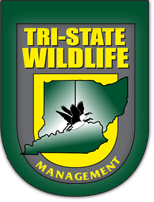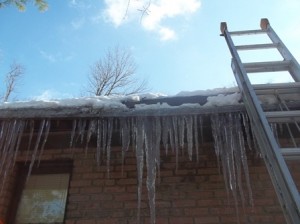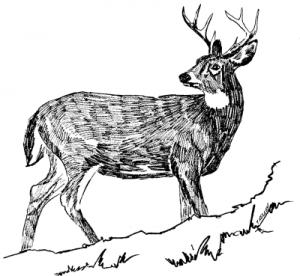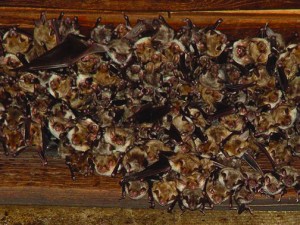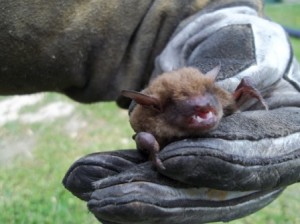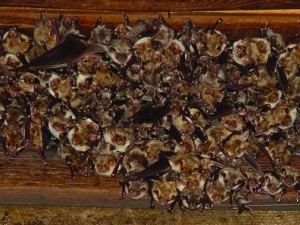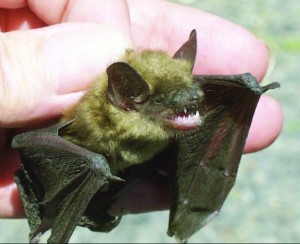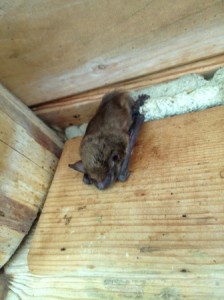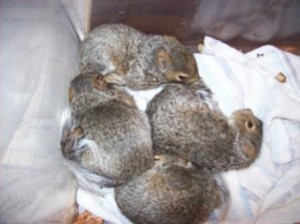For squirrel removal in Northern Kentucky and Cincinnati, call Tri-state Wildlife Management at (859) 635-0037.

Now that the weather is colder squirrels are seeking out new places to den. Don’t let your cozy attic be one of them.
Northern Kentucky and Cincinnati Squirrel Removal: The weather has turned colder, so there’s a mad rush by wildlife to finalize their plans for the winter. Squirrels are fattened, nuts are buried, and now, it’s time to find some nice, warm insulation to snuggle into. During the warm, summer months, squirrels are most comfortable residing in mature trees, but when the weather turns cold, squirrels take advantage of warmer, man-made structures. Squirrels gain access to the inside of homes (typically attics and walls) by chewing on construction material. Aside from stone, brick, and certain metals, no construction material can fully withstand the gnawing of a squirrel. Squirrels have incisors that grow continuously, and the only way to keep their teeth short and sharp is by chewing. Squirrels will take advantage of construction gaps, weakened areas, and even perfectly constructed and maintained areas on a home.
It is important to point out that squirrels not only chew holes to gain access into your home, but once inside, they continue to chew. This is a serious hazard, because squirrels tend to chew on electrical wires, which can cause fire. In addition, if squirrels have access to rafters over many years, the rafters can be weakened. If you use your attic for storage and have a squirrel invasion, whatever property is stored is susceptible to damage.
Unfortunately, squirrels are repeat violators – once they find a home in your home, they’ll stay there unless evicted. One of the most frustrating things for a homeowner with a squirrel issue is to repair entryways only to have a new entry chewed open by a squirrel. To prevent this situation, it is important to not only exclude violating squirrels by repairing entries and vulnerable areas, but also to trap and remove the squirrels that have made your house their home. It is important to make sure that all squirrels have excited the premises prior to making repairs. There’s nothing that can ruin a thanksgiving dinner worse than the smell of a rotting animal carcass in the attic. It is also vital to repair entries and vulnerable areas with wildlife grade construction materials to help deter future squirrel or wildlife problems.
Preventive maintenance can go a long way in keeping your family and property wildlife free this winter. Tri-State Wildlife Management offers affordable, but thorough, home inspections that can identify wildlife entries and potential entries. As a full service company, TSW offers exclusion, wildlife deterrent chimney cap installation, repairs, trapping, and removal. In addition, TSW educates customers on how to prevent future attempts by wildlife to enter your home, including habitat modification.
The amount of mature trees in Northern Kentucky and Greater Cincinnati suburbs make the area a squirrel haven. Squirrels can enjoy the coolness of a tree den site in the warmer months, an abundance of tree nuts in the fall, and nearby home attics provide squirrels with a comfortable den for the winter. Call Tri-State Wildlife Management if squirrels have invaded your home for the winter, or call for a preventive home inspection. TSW is fully licensed and insured, and we stand behind all our work.
Tri-State Wildlife Management – Protecting You, Your Property, and Your Investment
Northern Kentucky and Cincinnati Squirrel Removal: Call Tri-state Wildlife Management Today at (859) 635-0037.
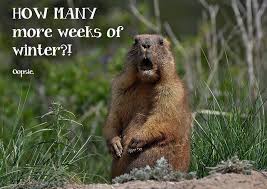 The Greater Cincinnati Area is experiencing one of the coldest weeks in recent history, and is headed for an unseasonably warm spell in just a few days. Right in the middle of this weather hiatus is Groundhogs Day. This time honored tradition is celebrated every year in the United States and Canada on February 2nd. The Lure states that if a groundhog sees its shadow upon exiting their burrow that it will retreat back to their burrow and there will be six more weeks of winter. If the groundhog on the other hand does not see its shadow spring will arrive early.
The Greater Cincinnati Area is experiencing one of the coldest weeks in recent history, and is headed for an unseasonably warm spell in just a few days. Right in the middle of this weather hiatus is Groundhogs Day. This time honored tradition is celebrated every year in the United States and Canada on February 2nd. The Lure states that if a groundhog sees its shadow upon exiting their burrow that it will retreat back to their burrow and there will be six more weeks of winter. If the groundhog on the other hand does not see its shadow spring will arrive early.